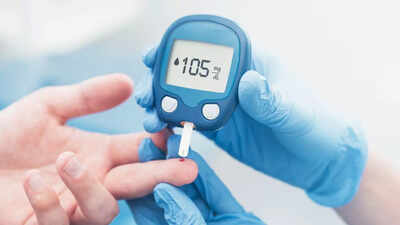For individuals managing diabetes, maintaining stable blood sugar levels is a crucial daily task. A common challenge is experiencing unexpectedly high blood glucose readings upon waking, a situation often linked to the "Dawn Phenomenon." This refers to the natural increase in blood glucose that occurs in the early morning hours.

Accurate morning glucose measurement is vital for creating personalized management strategies, which may include adjustments to medication, diet, and lifestyle. Understanding your body's specific patterns and responses enables you to proactively tackle high blood sugar levels.
Blood sugar, or blood glucose, indicates the amount of glucose present in the blood. Glucose is the body's primary energy source. The dawn phenomenon is characterized by naturally rising blood sugar levels in the early morning due to the release of hormones like cortisol and growth hormone.
This phenomenon is common among people with diabetes, affecting over 50% of those with Type 1 or Type 2 diabetes. Monitoring blood sugar levels, especially in the morning, is essential for guiding personalized management plans involving medication, diet, and lifestyle adjustments.
According to the American Diabetes Association, the primary cause of high morning blood sugar is decreased insulin activity. Between 3 am and 8 am, the body releases hormones that stimulate the liver to increase glucose production, providing energy for waking up.
However, in individuals with diabetes:
Consequently, blood sugar levels rise, leading to high morning readings.
The main indicator of the dawn phenomenon is elevated morning blood sugar levels, often detected through glucometer readings or continuous glucose monitoring (CGM) devices.
Common symptoms may include:
Continuous glucose monitoring (CGM) is the most effective way to detect the dawn phenomenon. A CGM device tracks glucose levels around the clock, measuring them every few minutes and generating a graph of blood sugar patterns. Even without CGM, healthcare providers can often identify the dawn phenomenon by analyzing consistent glucometer readings.
CGM helps to:
If unmanaged, the dawn phenomenon can lead to consistently high blood sugar levels, increasing the risk of diabetes complications, such as:
Failing to address the dawn phenomenon can result in prolonged periods of high blood sugar, negatively impacting long-term health.
Some lifestyle changes and home remedies that may help lower morning blood sugar levels include:
If you experience high blood glucose levels frequently (more than three times in 2 weeks), consult a doctor. Individuals with diabetes should seek personalized advice from their doctor before trying home remedies or altering their medication.
The timing of blood sugar tests is important, as levels can fluctuate after consuming carbohydrates. Recommended times include:
To manage blood sugar spikes associated with the dawn phenomenon, individuals with diabetes can try the following:
If elevated morning blood sugar levels persist, consult a doctor for individualized advice. Consistency and regular follow-ups with your healthcare provider can significantly reduce the risk of complications related to the dawn phenomenon.
Newer articles
Older articles
 Greg Chappell: Rishabh Pant is Revolutionizing Cricket with Unorthodox Style
Greg Chappell: Rishabh Pant is Revolutionizing Cricket with Unorthodox Style
 Najmul Hossain Resigns as Bangladesh Test Captain After Sri Lanka Defeat
Najmul Hossain Resigns as Bangladesh Test Captain After Sri Lanka Defeat
 Earth's Mantle Unleashes Volcanic Fury, Carving New Ocean in Africa
Earth's Mantle Unleashes Volcanic Fury, Carving New Ocean in Africa
 Smith Targets Test Return After Baseball Cage Rehab in New York
Smith Targets Test Return After Baseball Cage Rehab in New York
 Rishabh Pant's Somersault Celebration Draws "Unnecessary" Remark From Doctor Who Aided Recovery
Rishabh Pant's Somersault Celebration Draws "Unnecessary" Remark From Doctor Who Aided Recovery
 Is Daily Bowel Movement Necessary? When Irregularity Signals a Health Issue
Is Daily Bowel Movement Necessary? When Irregularity Signals a Health Issue
 Shimron Hetmyer's Last-Gasp Six Stuns MI New York, Seals Record MLC Chase for Seattle Orcas
Shimron Hetmyer's Last-Gasp Six Stuns MI New York, Seals Record MLC Chase for Seattle Orcas
 Oral Cancer: Spotting the Signs, Understanding the Risks, and Why Early Detection is Key
Oral Cancer: Spotting the Signs, Understanding the Risks, and Why Early Detection is Key
 India's First Dengue Vaccine Nears Finish Line: Phase 3 Trials Show Promise
India's First Dengue Vaccine Nears Finish Line: Phase 3 Trials Show Promise
 Asia Cup 2025: ACC Reportedly Targets September Start Amid Rising Hopes, Aims for Schedule Release Next Month
Asia Cup 2025: ACC Reportedly Targets September Start Amid Rising Hopes, Aims for Schedule Release Next Month